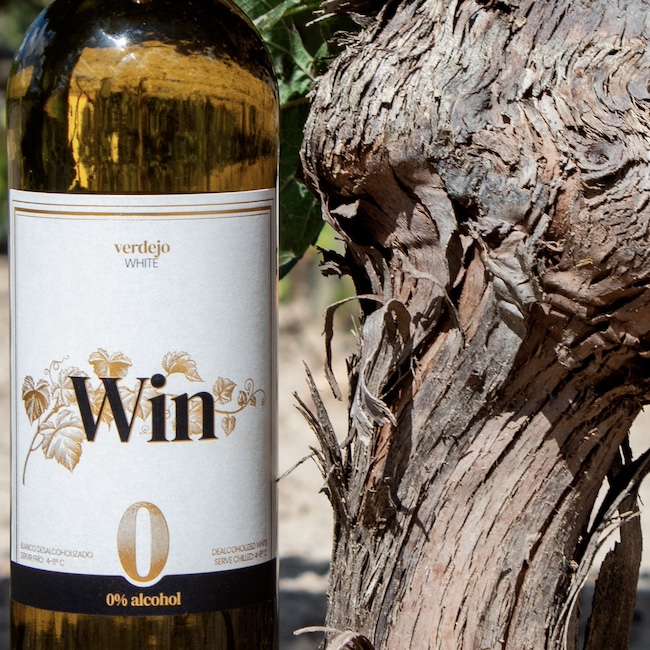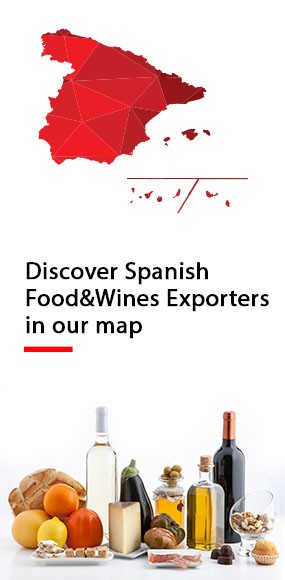.png.transform/rendition-xs/image_image%20(1).png)
The Rise of Spanish Non-Alcoholic Wines: An Amazing Blend of Tradition and Innovation
New year, new habits? Celebrate #Drynuary with the refined taste of these Spanish non-alcoholic wines. Zero alcohol, 100% flavor
The world of wine is fascinating. Even for professionals and connoisseurs, the number of origins, references, and types continues to grow, making it even richer and more complex. Among the trends gaining momentum in recent times are alcohol-free wines, driven by a growing audience that either cannot consume alcohol or prefers not to.
Although alcohol-free wine is not a novelty—it began being produced almost 100 years ago, with more consistent attempts since the 1970s—it is only now experiencing a significant surge in popularity. Obviously, alcohol-free wine is more than just grape juice; we cannot call simple must “wine” without including the fermentation process, during which alcohol naturally appears. This is precisely the element that must be removed. Ethanol has a lower boiling point (78°C/172ºF) than water. By heating the liquid, the alcohol evaporates, leaving behind a 0% ABV beverage.
In Spain, a country with a long tradition of consuming non-alcoholic beverages (for example, 0.0 or low-alcohol beer accounts for 14% of total per capita beer consumption), some companies are spearheading the alcohol-free wine (NOLO) movement. Among the pioneers is Bodegas Matarromera, in Ribera del Duero in Castile-León. “We have been working on this exciting project for over 20 years, starting in 2003. We are the pioneers. My father, Carlos Moro, was a visionary in producing alcohol-free wine in Europe when this option did not exist in the market. In 2005, we successfully implemented our de-alcoholization system, and our Win Sin Alcohol winery became a reality,” explains Beatriz Moro, president of the winery.

A Complex De-Alcoholization Process
The process used involves evaporation with spinning cones, a principle also employed by other wineries like Le Naturel, part of the Vintae Group and based in Navarre. They market a line called Zero Zero, the alcohol-free version of their wines. “This system allows us to preserve the qualities of the wine, resulting in a product much closer to the original than with other technologies,” explains Pedro Balda, Doctor of Oenology and R&D Director at Le Naturel.
Balda highlights the key challenge: making the drink as similar as possible to wine, rather than resembling grape soda. “With this technique, the separation of ethanol from the wine is not a chemical process but purely physical. It’s a matter of pressure and temperature. The system involves a column with rotating cones that create negative pressure, lowering the boiling point of alcohol to a much lower temperature. This technique separates the volatile phase from the liquid phase, allowing us to retain the anthocyanins, water, etc., and eliminate the alcohol.”
At Le Naturel, they produce a white wine made from Garnacha Blanca and Viura, with aromas of stone fruits, white flowers, and honeyed notes. On the palate, it has a sweet character with good acidity and refreshing citrus notes. Their red wine, made with Garnacha Tinta, offers aromas of fresh red fruits, hints of compote and liqueur cherries, and some spiced touches. On the palate, it is refreshing and fresh, with good acidity.
Moro agrees. Her winery produces reds—a young wine and one aged for 12 months in French and American oak barrels—whites, and sparkling wines (including rosé) made from varieties such as Verdejo or Tempranillo. “Each type has its own method, but we could say that red wine is the most difficult to de-alcoholize because it is the most complex organoleptically speaking.” Their Tempranillo red offers aromas of red fruits and berries, with pleasant sweet tannins on the palate. They also produce a red aged for 12 months in barrels, where the aromatic spectrum is enriched with notes of toast and licorice from the barrel aging. The white wine, made from Verdejo, Viura, and Sauvignon Blanc, presents aromas of green apple and herbaceous notes typical of Verdejo (anise, fennel). It shows good acidity on the palate. Finally, their sparkling wine offers herbaceous and aniseed aromas of fennel, with clear notes of green apple and citrus. On the palate, it delivers a pleasant carbonic sensation.

Richi Arambarri, General Manager of Le Naturel, believes “the key is to achieve a product that feels ‘wine-like,’ targeting the end consumer, people who usually drink wine on weekends but might prefer an alcohol-free alternative during the week.” Moro agrees and is convinced that “many people who don’t consume alcohol for one reason or another will be able to enjoy a glass of wine this way.”
In addition to Win and Le Natural Zero Zero, many other alcohol-free wines are produced in Spain from different regions. For example, Bodegas Torres in Catalonia makes the Natureo range, with a red wine from Garnacha and Syrah grapes featuring red fruit aromas and a juicy palate, and a white wine from Muscat of Alexandria grapes, offering rich and fresh floral aromas, along with green apple, peach, and citrus notes. The Martín Códax winery produces an alcohol-free Albariño called Marieta Sin, with floral undertones, mandarin notes, stone fruit, and a good balance of acidity and sweetness. From Murcia, Juan Gil winery produces its own line of alcohol-free wines, Disfrutando, including a white Verdejo (with aromas of citrus and white flowers) and a red made from Monastrell and Syrah (with notes of red fruits, aromatic herbs, and spices).
International Demand
The growing interest in alcohol-free wine is evident from Matarromera’s numbers. “We export 60% of our Win production. The international market is crucial for the consolidation of our alcohol-free wine, and we are present in over 30 countries, including the United States, Canada, Belgium, and Norway,” Moro enumerates. Arambarri emphasizes that 0.0 wine “is still in its early stages but has enormous potential ahead,” highlighting key markets such as “the United States, Canada, and Eastern Europe.” Moro also rejects the idea of alcohol-free wine being secondary, explaining that “many top restaurants worldwide want to offer pairings for their menus, including alcohol-free wines for those who choose not to consume alcohol. It is undoubtedly a social need with enormous potential.”
At the Wine Fandango restaurant (Logroño, La Rioja), they use the Le Naturel Zero Zero range for alcohol-free pairings. Sommelier Jano Pérez Roja suggests pairing Le Naturel Zero Zero Blanco with cardoon in almond sauce with seared foie gras. “The vegetal touch of this variety pairs well with the cardoon, and it has a slightly mature and unctuous character that complements the foie beautifully,” he explains.
Le Naturel Zero Zero Tinto is paired with a dish made of peppers and "lecherillas" (a type of offal corresponding to the thymus and pancreas of lamb), served crispy with roasted garlic cream and slow-cooked egg. “There is great harmony between the intense red fruit notes of Garnacha and the sweet tones of the pepper,” he comments.
Some restaurants take it a step further and even de-alcoholize wines themselves. This is the case at Disfrutar, the three-Michelin-starred Barcelona restaurant, currently ranked No. 1 on The World’s 50 Best Restaurants 2024 list. Using a Girovap machine, they remove alcohol through vacuum distillation. They have found that the more complex the wine, the better its properties are preserved, making red wines and Sherries the most successful in this process.
In short, alcohol-free wine is here to stay, and Spain is at the forefront: from 0.0 to infinity.

